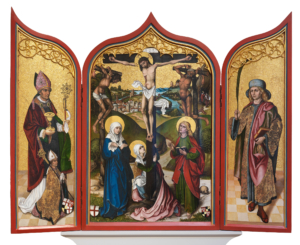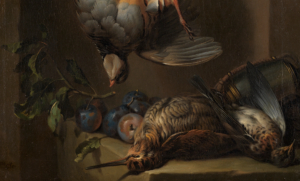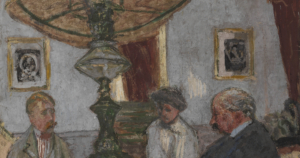A story of means and mediators
What might a smartphone and a pine board have in common?
Both are bearers and means of information. In short: media.
In art however it often takes a few centuries between sending and receiving the information.
Because advertising, reach or name recognition seem to be timeless categories, they apply to social media just as they did to the medium of art 500 years ago.
0:00
0:00
Storage medium, media consumption, media literacy, “something to do with media” — media is a term that is now omnipresent. But not an easy one to grasp. It is worthwhile to ask questions: What is a medium? What constitutes it? A book, a tablet, a smartphone are all media as are works of art, be it a winged altar made of painted wooden panels, a copperplate engraving, or an analogue photograph. It is a means, something in the middle, an in-between, where on one side there is a sender, and on the other a receiver, for example, painter and viewer, client and collector.
And the in-between, the carrier, has both technical and material prerequisites and at the same time a specific sphere of action. It can be transportable like a small enamel sign or fixed to a specific place like a huge altar. It allows the artist this or that form of expression — a pencil drawing, for example, enables an idea to be quickly jotted down, whereas a copperplate demands the engraver incise powerful and deliberate lines with a cutting tool. And every medium has a specific, larger or smaller audience and circulation area.
Medium, therefore, as a means. One often speaks of the “means to an end”. To reduce a work of art to an end would hardly do it justice. Nevertheless, the function it fulfills is one of the possible ways of looking at it. The function that was consciously assigned to it or that it fulfills can alter when the framing conditions change, it may even lose its function. Viewed from this historical perspective of medium and function, a work of art can tell us a lot about the social, economic, political, or religious contexts in which it has been or is inscribed.
There’s probably no better place to tell art history as media history than at the ZKM | Center for Art and Media. This tour is about tracing the conditions of the respective medium and, above all, interrogating it in terms of its original mode of action. And also about looking at the interplay of these two components of condition and effect. Here you are cordially invited to take a look behind the scenes and into the auditorium with its canvasses, pinewood boards, and salt papers.


